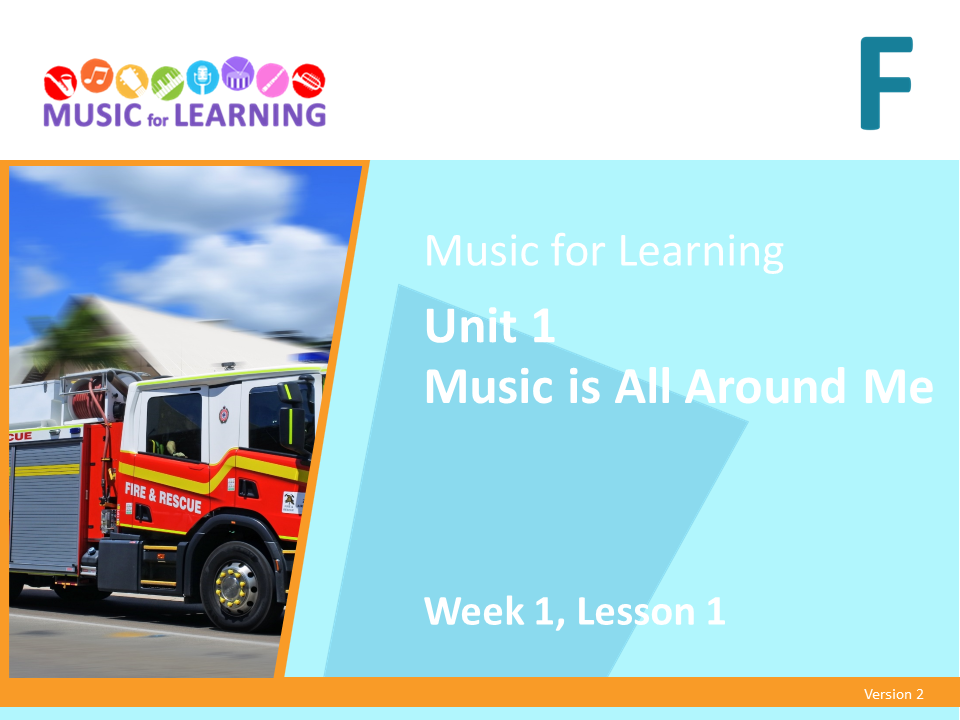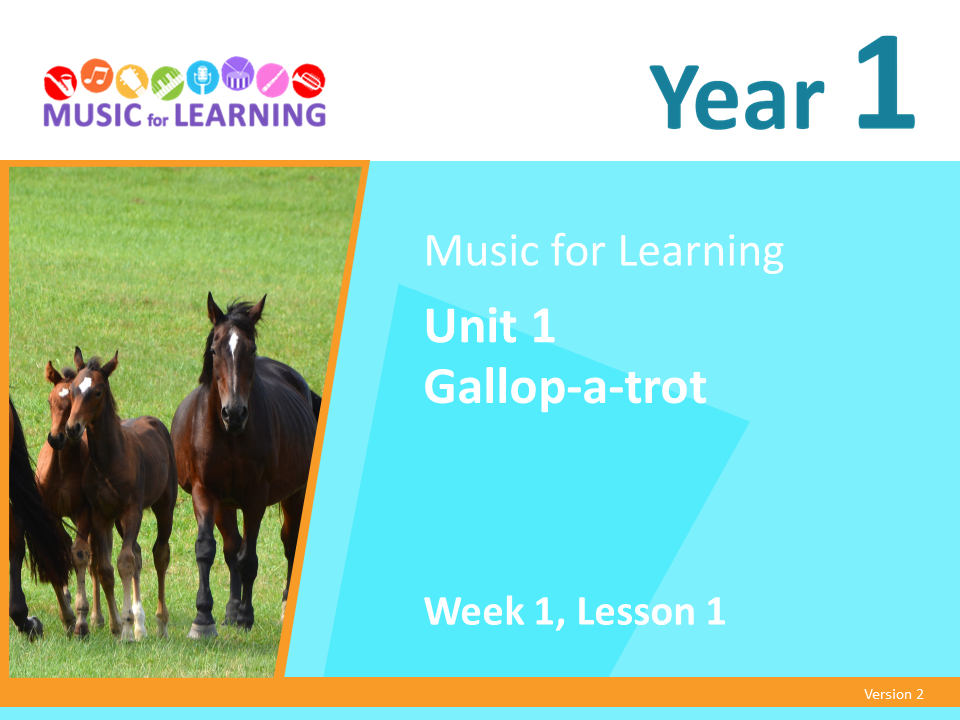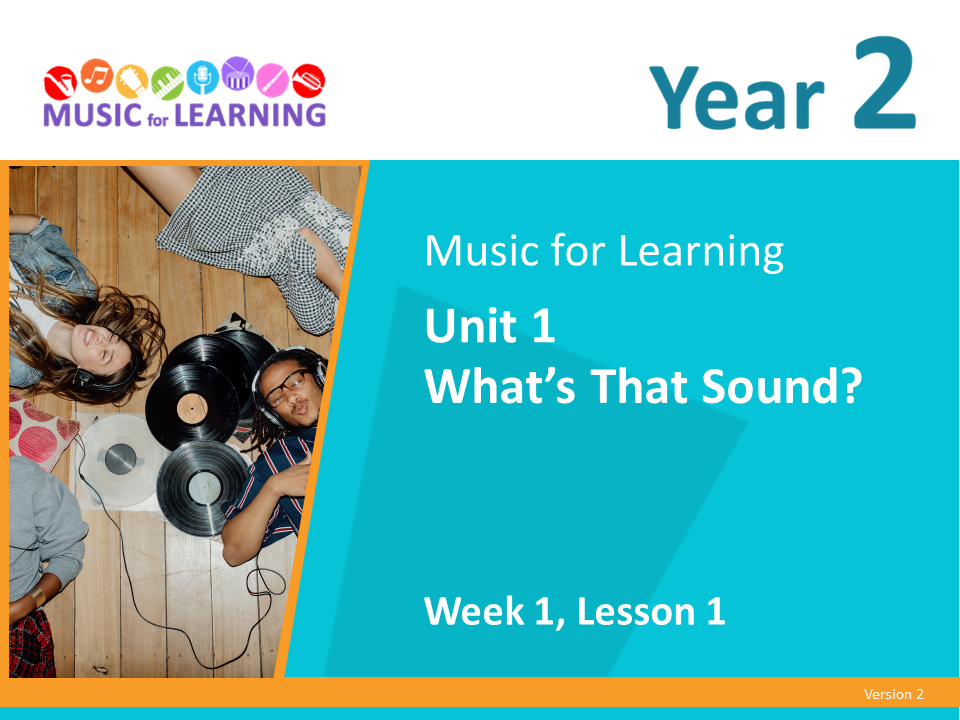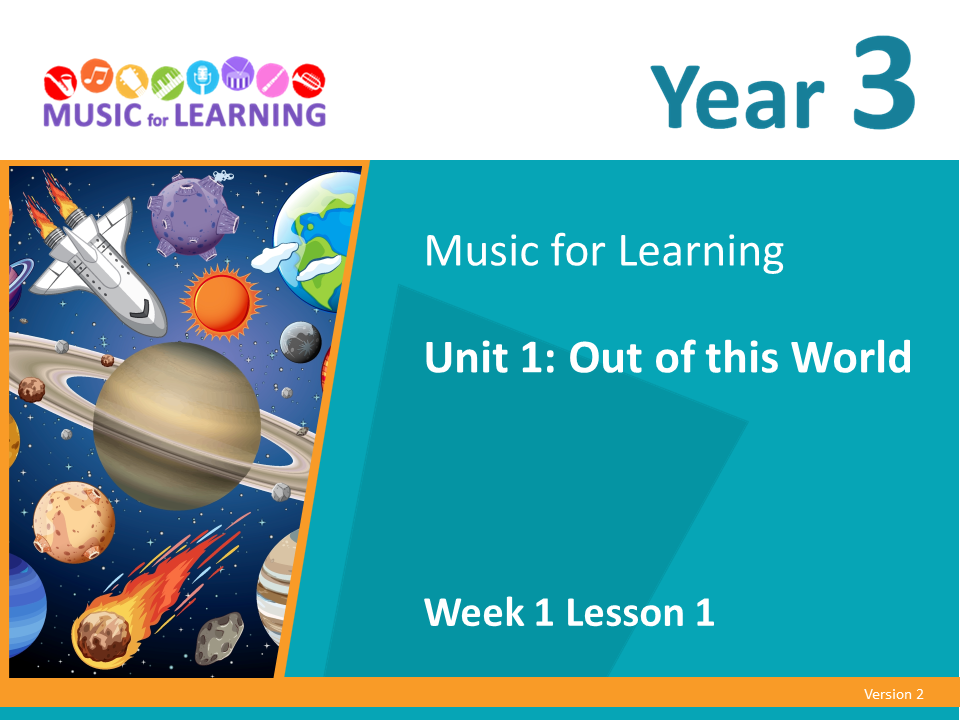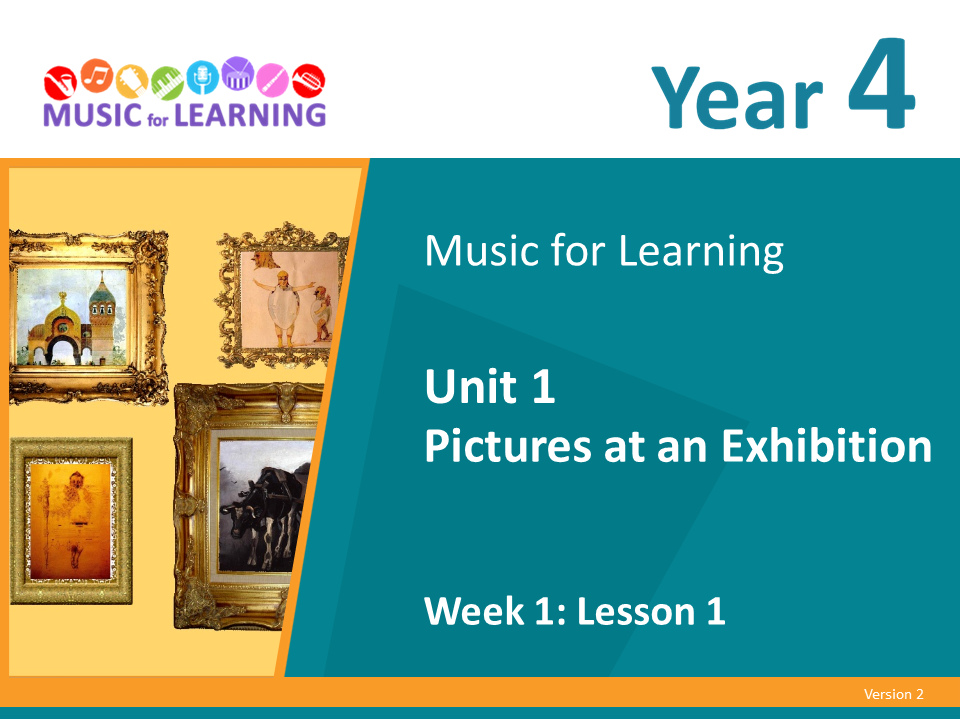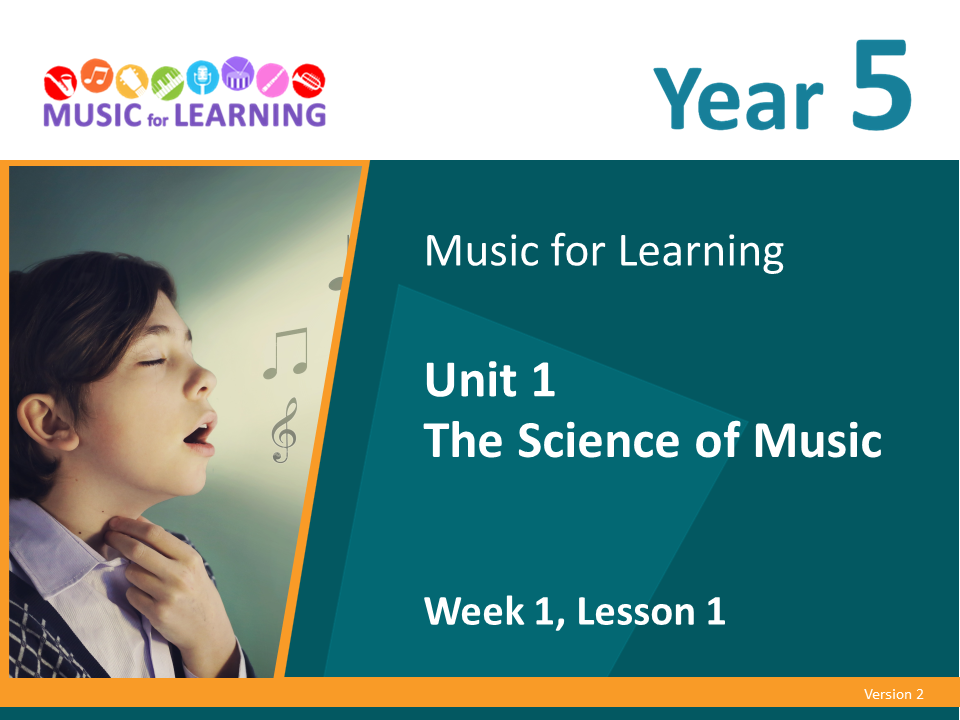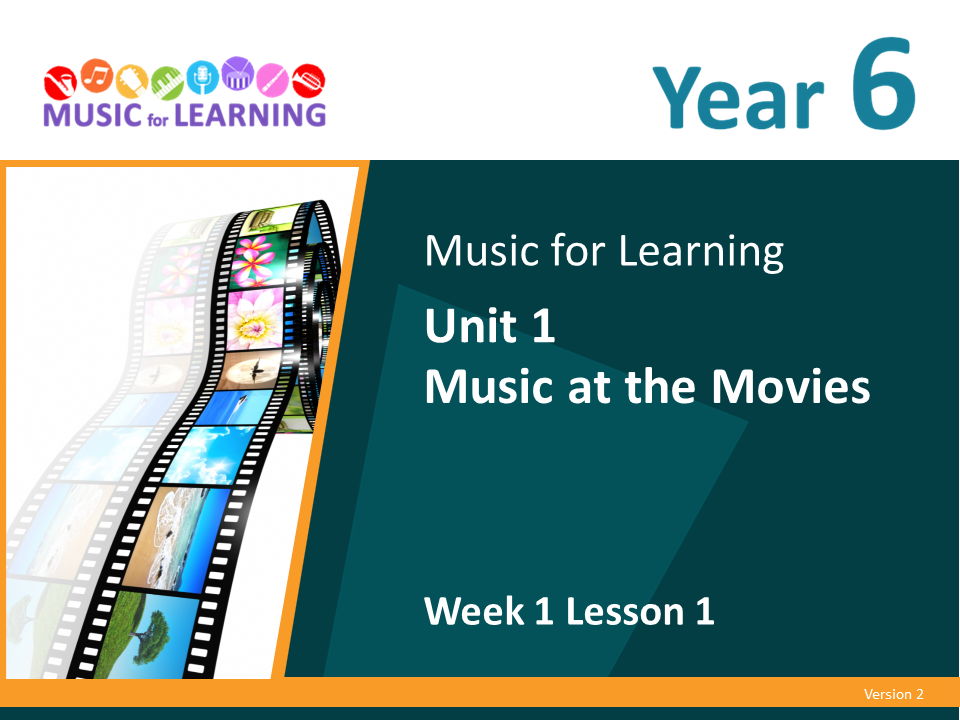Music for Learning - Unit 1
Foundation – Year 6
Music for Learning meets Australian Curriculum Music requirements.
Share this page:
Starter Lessons
Unit Overviews
Foundation Year: Music Is All Around Me
Teaching Resources
Australian Curriculum Content Descriptions
Foundation Year Unit 1: Music Is All Around Me is a Music unit for Foundation Year students. It aligns with the Australian Curriculum Content Description:
- Explore how and why the arts are important for people and communities. (AC9AMUFE01)
- Use play, arts knowledge, processes and/or skills to discover possibilities and develop ideas. (AC9AMUFD01)
- Create artwork that communicates ideas. (AC9AMUFC01)
- Share their artwork with audiences. (AC9AMUFP01)
Learning Objectives
In Year Foundation Unit 1 Series, students will:
- know that letters, numbers, signs and music notes are all symbols used for reading
- learn to sing s and m in tune
- learn to show the correct body ladder positions for s and m
- learn to notate the rhythm of ‘Rain, Rain’ and ‘Snail, Snail’
- learn to tap the beat and clap the rhythm
- recognise the rhythm of their own name
- learn to compose a rhythm using ta and titi
- match simple words to ta and titi
- use their speaking voice to memorise and respond to a rhyme
- know the ways music can tell a story about the weather
- make a rain stick and perform a weather soundscape.
In Year Foundation Lesson 2 Series, students will:
- learn to sing songs about the weather in tune
- show the shape of melodies in the air
- compose and perform a rhythm using body percussion
- demonstrate a strong beat when singing and performing
- learn how to sing in different groups in a choir formation
- learn and show good behaviours for performing
- learn how to rehearse for a performance.
Assessment
End-of-Unit Assessment
The End-of-Unit Assessment occurs at the end of the unit and usually includes a performing, composing or responding task. Composing tasks are usually completed progressively throughout the unit and assessed at the end. All assessment resources are contained within the teaching resources.
Year 1: Gallop-a-trot
Teaching Resources
Australian Curriculum Content Descriptions
Year 1 Unit 1: Gallop-a-trot is a Music unit for Year 1 students. It aligns with the Australian Curriculum Content Description:
- Explore where, why and how people across cultures, communities and/or other contexts experience music. (AC9AMU2E01)
- Explore examples of music composed and/or performance by First Nations Australians. (AC9AMU2E02)
- Develop listening skills and skills for singing and playing instruments. (AC9AMU2D01)
- Select and combine elements of music when composing and practising music for performance. (AC9AMU2C01)
Learning Objectives
In Year 1 Lesson 1 Series, students will:
- notate s-m-l on the 3-line stave
- show s-m-l with their body ladder when singing
- understand connections between song lyrics and meaning
- explore how the music elements can show the feeling of a particular season
- order rhythms to match the structure of a known song
- read and perform graphic notation
- use body percussion patterns and actions with a partner to show the beat
- notate the pitch and rhythm for ‘Plainsies Clapsies’ and ‘Bluebells’
- link learning to Science: push and pull.
In Year 1 Lesson 2 Series, students will:
- sing in tune in unison and keep a steady beat
- practice using clear diction when singing
- compose and then perform a body percussion ostinato
- memorise lyrics, actions and storyline to perform a cumulative song
- know that melodies can have different high and low shapes
- learn and show good behaviours for performing
- learn how to rehearse for a performance
- perform songs about nature for an audience.
Assessment
End-of-Unit Assessment
The End-of-Unit Assessment occurs at the end of the unit and usually includes a performing, composing or responding task. Composing tasks are usually completed progressively throughout the unit, and assessed at the end. All assessment resources are contained within the teaching resources.
Year 2: What’s That Sound?
Teaching Resources
Australian Curriculum Content Descriptions
- Explore how and why the arts are important for people and communities. (AC9AMUFE01)
- Use play, arts knowledge, processes and/or skills to discover possibilities and develop ideas. (AC9AMUFD01)
- Create artworks that communicate ideas. (AC9AMUFC01)
- Share their artwork with audiences. (AC9AMUFP01)
Learning Objectives
- Revise the differences between music and noise
- Sing and read the new note: do
- Sing so, mi, la and do using Curwen hand signs
- Notate parts of known songs on a 3-line stave
- Recognise the difference between high and low sounds
- Aurally and visually recognise ta and titi
- Understand the ways sound is made on musical instruments
- Know about the didgeridoo and other First Nations instruments
- Perform and compose using body percussion
- Incorporate dynamics in performance and composition
-
Make and decorate a drum using recyclable materials
-
Show good behaviours for listening and performing.
Assessment
- aurally and visually recognising rhythmic units
- labelling pitch with sol-fa names
- understanding instrument characteristics
- performing in time, showing dynamic level change.
Year 3: Out of This World
Teaching Resources
Australian Curriculum Content Descriptions
Year 3 Unit 1: Out of This World is a Music unit for Year 3 students. It aligns to the Australian Curriculum Content Description:
- AC9AMU4E01 – explore where, why and how music is composed and/or performed across cultures, times places and/or other contexts.
- AC9AMU4E02 – explore how First Nations Australians use music to communicate their connection to and responsibility for Country/Place.
- AC9AMU4D01 – develop listening skills and skills manipulating elements of music when singing and playing instruments.
- AC9AMU4C01 – manipulate elements of music to communicate ides, perspectives and/or meaning when composing and practising for performance.
- AC9AMU4P01 – sing and play music they have learnt and/or composed in informal settings.
Learning Objectives
In Weeks 1-9, students learn:
- To sing together in tune
- To notate the rhythm and solfa of a song
- Melodies can be high or low
- To write d, r and m on the treble stave
- To draw a treble clef
- The names of the notes on the treble stave
- To describe how music can tell a story
- A new rhythm: ta-a
- To apply musical elements to a piece of music
- To convert sol-fa to letter names on the treble stave
- To analyse a First Nation’s piece of music
- To notate a known song on the treble stave
- To prepare for your assessment and performance
- To present Swing a Lady Uptom for assessment
- To demonstrate understanding of musical elements
- To complete their music assessment
- To compare the musical elements in two pieces of music.
Assessment
End-of-Unit Assessment
The End-of-Unit Assessment occurs at the end of the unit and usually includes a performing, composing or responding task. Composing tasks are usually completed progressively throughout the unit, and assessed at the end. All assessment resources are contained within the teaching resources.
Year 4: Pictures at an Exhibition
Teaching Resources
Australian Curriculum Content Descriptions
Year 4 Unit 1: Pictures at an Exhibition is a Music unit for Year 4 students. It aligns to the Australian Curriculum V9.0 Content Description:
- AC9AMU4E01 – explore where, why and how music is composed and/or performed across cultures, times places and/or other contexts.
- AC9AMU4E02 – explore how First Nations Australians use music to communicate their connection to and responsibility for Country/Place.
- AC9AMU4D01 – develop listening skills and skills manipulating elements of music when singing and playing instruments.
- AC9AMU4C01 – manipulate elements of music to communicate ides, perspectives and/or meaning when composing and practising for performance.
- AC9AMU4P01 – sing and play music they have learnt and/or composed in informal settings.
Learning Objectives
Students will:
- identify and sing the minor pentatonic scale
- learn to identify and sing s,
- sing in unison and in up to 3 parts
- sing folksongs in words, time names and sol-fa
- distinguish between major and minor tonalities
- notate rhythms in simple triple and simple quadruple time
- visually and aurally identify orchestral instruments, their family, mode of sound production and their timbre
- create a musical structure using a known song
- complete an aural and written assessment task
Year 4 Lesson 2 Series
Students will:
- sing in unison and in a round
- learn to recognize s, and l, when they see it and hear it
- read and perform rhythms in simple time signatures
- memorise, rehearse and perform ‘The Instrument Song,’ ‘The Riddle Song,’ ‘The Birch Tree’ and ‘Yonder Mountain.’
- be introduced to the concept of a leitmotif and how character can be represented in music
- practice good performing behaviours
Assessment
End-of-Unit Assessment
The End-of-Unit Assessment occurs at the end of the unit and usually includes a performing, composing or responding task. Composing tasks are usually completed progressively throughout the unit, and assessed at the end. All assessment resources are contained within the teaching resources.
Year 5: The Science of Music
Teaching Resources
Australian Curriculum Content Descriptions
Year 5 Unit 1: The Science of Music is a Music unit for Year 5 students. It aligns to the Australian Curriculum Content Description:
- AC9AMU6E01 – explore the ways that the elements of music are combined in music across cultures, times, places and/or other contexts
- AC9AMU6E02 – explore ways First Nations Australians use music to continue and revitalise culture
- AC9AMU6D01 – develop listening/aural skills and skills for manipulating elements of music to achieve expressive effects when composition, singing, and playing instruments.
- AC9AMU6C01 – manipulate elements of music and use compositional devices to communicate ideas, perspectives and/or meaning when composing and practising music for performance, and notate, document and/or record the music they compose.
- AC9AMU6P01 – perform music in a range of forms they have learnt and/or composed in informal and/or formal settings.
Learning Objectives
Year 5 Lesson 1 Series:
Students will:
- visually and aurally identify simple time rhythms including tikatika, ti-tika and tika-ti
- notate rhythms in simple triple time
- introduce fa to their knowledge and understanding of sol-fa
- revise s, and l,
- learn the key of F Major and the function of a flat
- devise and explain how movement and tempo can tell a story
- analyse and evaluate ‘Moth’ by Bangarra Dance Theatre
- learn the musical terms for tempo
- sing in unison and in a 3 or 4-part round
- complete a performing and presenting assessment based on the folk song, ‘Cedar Swamp’
Year 5 Lesson 2 Series:
Students will:
- learn a new rhythmic unit: tim-ka
- notate and aurally and visually identify an anacrusis
- memorise an American Appalachian circle dance and movement for ‘Nigun Atik’
- explore dances of our First Nations Peoples
- sing and perform ‘Oh, How Lovely,’ ‘Do Se So,’ ‘Alligator Hedgehog,’ and ‘Old Joe Clark’
- learn to memorise and perform in different formations
Assessment
End-of-Unit Assessment
The End-of-Unit Assessment occurs at the end of the unit and usually includes a performing, composing or responding task. Composing tasks are usually completed progressively throughout the unit, and assessed at the end. All assessment resources are contained within the teaching resources.
Year 6: Music at the Movies
Teaching Resources
Australian Curriculum Content Descriptions
Year 6 Unit 1: Music at the Movies is a Music unit for Year 6 students. It aligns to the Australian Curriculum Content Description:
- AC9AMU6E01 – explore the ways that the elements of music are combined in music across cultures, times, places and/or other contexts
- AC9AMU6E02 – explore ways First Nations Australians use music to continue and revitalise culture
- AC9AMU6D01 – develop listening/aural skills and skills for manipulating elements of music to achieve expressive effects when composing, singing, and playing instruments.
- AC9AMU6C01 – manipulate elements of music and use compositional devices to communicate ideas, perspectives and/or meaning when composing and practising music for performance, and notate, document and/or record the music they compose.
- AC9AMU6P01 – perform music in a range of forms they have learnt and/or composed in informal and/or formal settings.
Learning Objectives
In Weeks 1-9, students learn:
- How our bodies make sound
- To recognise an anacrusis
- To recognise the note “fa”
- To sing two new songs in unison and in harmony
- To use aural skills to memorise and reproduce melodic phrases
- That a vibrating object creates sound waves
- The faster the soundwave, the higher the pitch
- To recognise the difference between a rhythmic ostinato and a melodic ostinato
- To memorise and sing songs using a specific form
- That the speed of soundwaves determines the pitch of the sound we hear
- To identify and count an anacrusis
- The terms ostinato, round and harmony
- To use aural skills to memorise and perform a new song with confidence
- Titi can be broken down into tikatika
- Titi and tikatika can be combined to make ti-tika and tika-ti
- An understanding of the anacrusis
- To apply knowledge of breath support to sing a new song in unison and harmony
- To compose and perform a rhythmic ostinato for a known song
- To locate and perform tikatika and ti-tika in a song
- How sound travels to our ears
- To understand and perform a descant
- To use aural skills and sing in multiple elements of harmony
- To apply the science of music to the instruments of First Nations Peoples
- To categorise instruments according to how they make sound
- To perform known songs with increasing complexity
- To devise movement to represent meaning in a song
- To demonstrate an understanding of a range of rhythmic concepts
- To demonstrate an understanding of sol-fa
- To demonstrate an understanding of the science of music
- To practise a round to perform for an audience of your peers
- To rehearse songs in preparation for an upcoming public performance
- To demonstrate proper performance presence
- To demonstrate an understanding of a range of rhythmic concepts
- To demonstrate an understanding of the science of music
- To perform a round for an audience of your peers
- To perform songs for an audience of peers, teachers, and parents
- To demonstrate proper performance presence
- To identify steady beat and rhythm
- To explain the difference between rhythm and steady beat.
Assessment
End-of-Unit Assessment
The End-of-Unit Assessment occurs at the end of the unit and usually includes a performing, composing or responding task. Composing tasks are usually completed progressively throughout the unit, and assessed at the end. All assessment resources are contained within the teaching resources.

